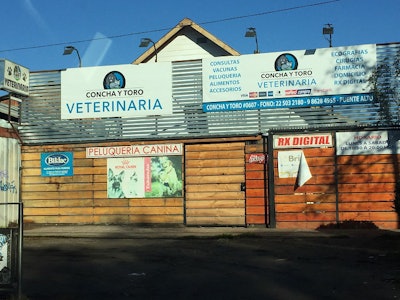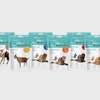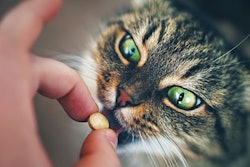
Latin America has been pegged as one of pet food’s fastest-growing regions for several years now, and that promises to continue. Euromonitor International projects dog and cat food sales in the region to post double-digit increases through 2024, with dry food sales rising at a compound average growth rate (CAGR) of about 12%. Wet pet food, though starting at a much smaller base, is expected to grow at more than 20% CAGR.
This dynamic growth is one reason we added an expert on the Latin American pet food market, Iván Franco, as a regular freelance contributor earlier in 2019. Based in Mexico, Franco is founder of market research firm Triplethree International.
His articles and reports from Euromonitor and others aside, I was recently able to get a personal glimpse of the pet-owning culture in three South American countries: Argentina, Chile and Paraguay. My observations confirmed the data showing that the region is poised to keep growing and contributing to global pet food growth.
Pets and pet businesses galore
During a family vacation with my husband and daughter, I saw dogs and cats everywhere in all three countries. Many of them seemed to be strays, which is not unusual in large cities in developing regions. (We visited Santiago and Valparaiso in Chile, Mendoza in Argentina, and Asuncion and Pilar in Paraguay). Yet I also observed many dogs being walked or held by their owners; and a waiter in Santiago explained that the scratches on his hands came from his pet cat! We also noticed cats sitting in windows of homes or businesses.
Even the dogs in places like Santiago that seemed to be street inhabitants appeared cared for: well fed and sporting warm fleece sweaters, with it being winter in that part of the world. And in the tiny Paraguayan community where our daughter is serving in the Peace Corps, and where all species of animals roam the sandy roads (cows, horses, chickens, you name it – I think the number of animals there may approach that of people, at 400), she introduced us to several people who obviously doted on their pet dogs.
I also observed many veterinary clinics and pet shops – mostly small, likely family owned businesses – and not just in big cities. For example, on our way to a vineyard in Pirque, Chile, on the far outskirts of Santiago, we passed a clinic called Concha y Toro Veterinaria – probably named after the nearby large winery. Similarly, I saw a small feed and general-purpose store prominently displaying dog foods in Pilar, a city of only 40,000 people in southwest Paraguay. Many of these establishments carry multinational pet food brands as well as ones from neighboring countries.

A small business in Pilar, Paraguay, displays dog foods for sale on the sidewalk outside its shop. l Photo by Debbie Phillips-Donaldson
Pet food markets on the upswing
Franco has reported that Chile especially seems primed for pet food premiumization, due to an economic upswing and low inflation. Pet ownership is also on the rise there, with Euromonitor ranking Chile as the seventh country globally in terms of projected dog and cat population growth (CAGR) by 2024.
Despite its current economic woes, mainly brought on by rampant inflation, Argentina is one of the largest pet-loving markets in the region, Franco said, with dog ownership reported at 78% of households (31% for cats). Pet food humanization is also taking hold there, though that could be threatened unless or until the economy pulls out of its current slump.
As for Paraguay, it’s generally still a third-world country, and its pet food sales or consumption currently don’t even register on most reports. Yet again, I saw evidence of that changing, with the pet businesses and obviously owned pets described above; and even in the small city of Pilar, I noticed multiple bins of pet food among the human food offerings in the bulk section of a supermercado we shopped at. Shortly after, while stopped at a traffic light, I saw a young woman on the sidewalk, holding her pet Dachshund while presumably waiting for a ride.



















